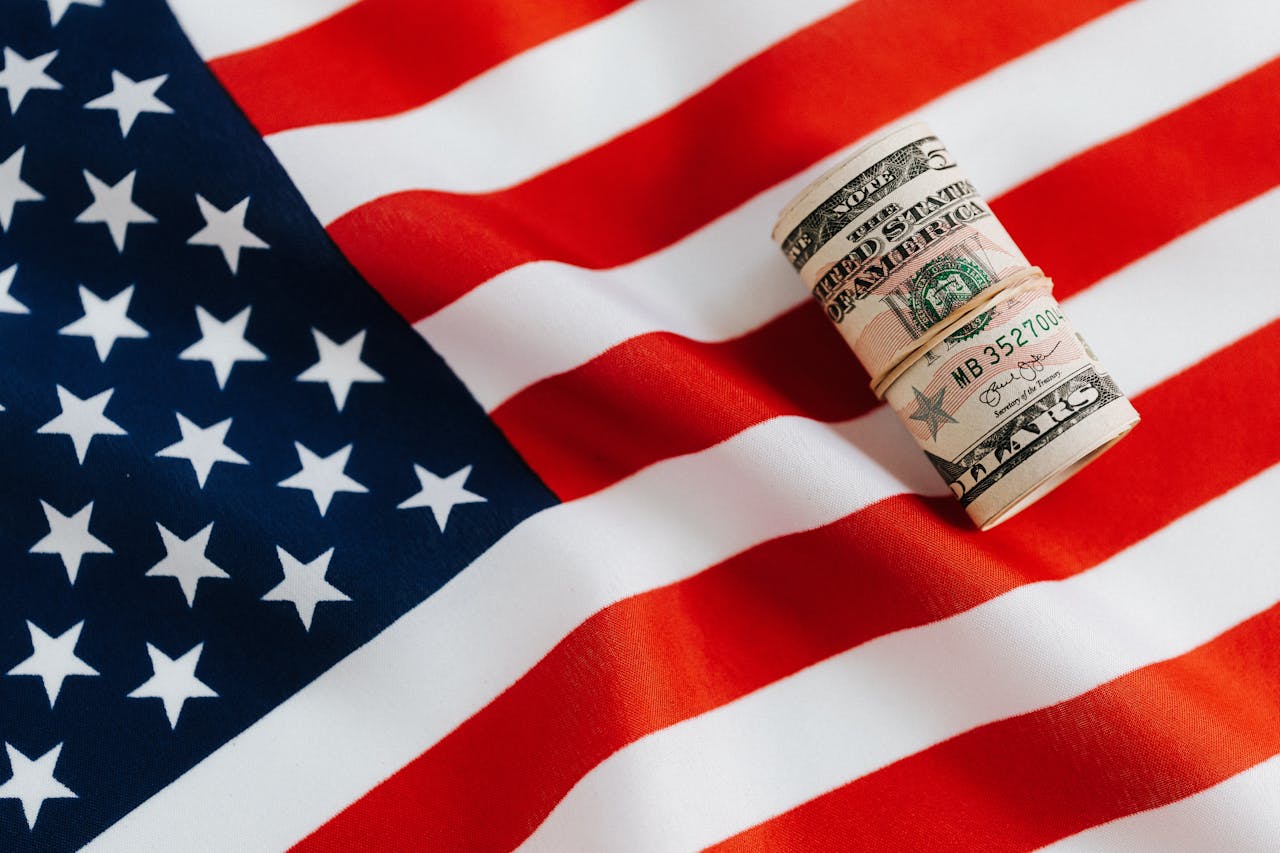In global finance, U.S. Treasuries have long been regarded as the “ballast” of capital markets. But a fair question arises: even as U.S. debt balloons and the dollar faces depreciation risks, why do central banks around the world continue to buy American government bonds?
The answer is far more complex than just “because the U.S. is powerful.”
1. The Dollar at the Core of the Financial World
The primary reason lies in the dollar’s dominant position in the global financial system.
- The Dollar as the Reserve Currency: As of Q1 2025, the U.S. dollar still accounts for 58.6% of global foreign exchange reserves (IMF data), far ahead of the euro (20.1%) and the Chinese yuan (2.8%).
- The Dollar as the Trading Currency: Over 80% of global trade is invoiced in dollars. Even trade between non-U.S. countries often settles through dollar intermediaries.
- The Dollar as a Pricing Anchor: Key global commodities (oil, gold), bonds, and derivatives are priced in dollars. Central banks and sovereign funds must hold sufficient dollar assets — and Treasuries are the most direct choice.
2. Treasuries as a Safe Haven
Despite political tensions or rising U.S. deficits, U.S. Treasuries remain a haven for global capital.
- Extreme Liquidity: With a daily trading volume of over $700 billion (Bloomberg 2025), the U.S. Treasury market is among the most liquid in the world.
- High Credit Confidence: Even after Fitch downgraded the U.S. to AA+ in 2023, America retains powerful repayment capacity — it can simply print the dollars to repay debt.
- Safety in Uncertainty: Whether it’s war in Ukraine or supply shocks from the Red Sea, markets in 2025 consistently rush into Treasuries when uncertainty rises.
3. The “Dollar Trap” in Global Trade and Reserves
For export-driven countries, holding U.S. Treasuries is not just a passive decision — it’s a trade and monetary policy tool.
- Recycling Export Dollars: Countries like China, Germany, and Japan earn dollars through exports. To avoid currency appreciation, they reinvest those dollars into Treasuries — forming a cycle of “export → reserves → reinvestment → more exports.”
- Currency Stabilization: Central banks use Treasuries to support exchange rates. For instance, in early 2025, the Bank of Japan bought $57 billion in U.S. bonds to counter yen depreciation.
- Capital Firewall for Open Economies: Countries like Singapore and South Korea hold large Treasuries reserves to stabilize against global capital flows.
4. Geopolitics and Sanctions: Still No Escape
Not buying Treasuries ≠ escaping the dollar system. Many countries still have little choice but to comply.
- Sanction Risks and Last Resorts: After the U.S. froze over $300 billion in Russian reserves post-2022, many governments feared “weaponized dollars.” But as of 2025, few nations — except Russia, Iran, North Korea — have successfully exited the dollar system.
- Reliance on Dollar-Based Clearing: SWIFT and U.S. clearing remain dominant despite efforts like China’s CIPS. Alternative systems exist, but adoption is limited.
- Middle East Dollar Ties: Although Saudi Arabia piloted yuan settlements with China, military and oil contracts with the U.S. still lock in dollar usage in 2025.
5. Passive Allocation and Reserve Diversification
Buying U.S. debt isn’t always about “belief in America” — sometimes, it’s just the path of least resistance.
- Reserve Diversification Efforts: Central banks have increased holdings of gold, eurozone bonds, and even Chinese bonds. But none match Treasuries for size or depth.
- Index Tracking Mandates: Sovereign wealth and pension funds often passively follow indexes like Bloomberg Barclays Global Bond Index, where Treasuries make up 34% — forcing large passive buying.
- Gold Isn’t a Full Substitute: Even though gold hit all-time highs in 2024–2025, its liquidity and pricing transparency still lag behind Treasuries.
6. Signs of Shifting Winds in 2025
Despite short-term dominance, global sentiment is shifting.
- China Reducing Exposure: As of April 2025, China’s U.S. Treasury holdings fell to $735 billion — the lowest since 2009.
- Gold and Euro Bonds on the Rise: Emerging markets are diversifying their reserves more aggressively than before.
- Cracks in Trust: U.S. fiscal credibility is under scrutiny — with a projected deficit of 6.8% of GDP in 2025, the highest in a decade.
Final Thought: Not Trust — Just No Better Option
Countries don’t buy U.S. Treasuries because they believe in America’s fiscal health. They buy them because the global system still forces them to. It’s like driving on a highway you don’t like — but there’s no exit ramp.
That said, with de-dollarization efforts, geopolitical divides, and rising alternatives like gold or CBDCs, the age of Treasuries as the world’s only safe asset may be nearing a turning point.
FAQ: Why Do Countries Keep Buying U.S. Treasuries?
1. If the U.S. has so much debt, why do countries still buy Treasuries?
Because U.S. Treasuries are still considered the safest and most liquid assets in the world. They offer unmatched depth and reliability, especially during times of global uncertainty.
2. Doesn’t buying U.S. debt make other countries more dependent on the dollar?
Yes — this is often referred to as the “dollar trap.” Many countries rely on dollars for trade and reserves, making them loop back into U.S. assets like Treasuries to stabilize their own economies.
3. Are there alternatives to U.S. Treasuries for foreign reserves?
Some alternatives include gold, eurozone bonds, and emerging market debt. However, none currently match Treasuries in terms of liquidity, market size, or global acceptance.
4. Is China still the biggest holder of U.S. debt?
As of 2025, China has significantly reduced its holdings, dropping to around $735 billion — no longer the top holder. Japan remains a larger foreign holder of U.S. Treasuries.
5. Could geopolitical tensions push countries to ditch U.S. bonds?
Yes, and some already are. However, a complete shift away from U.S. Treasuries requires a viable alternative global system — which, as of 2025, doesn’t fully exist yet.
6. What role does gold play in foreign reserves today?
Gold is increasingly used as a hedge against dollar volatility and geopolitical risk. However, it lacks the liquidity and daily utility of Treasuries for reserve management.
7. Will the demand for U.S. Treasuries fall in the long run?
Possibly. With rising U.S. deficits, global diversification efforts, and the growth of digital currencies and gold, many countries are gradually rebalancing away from Treasuries — but the shift will likely be slow.



